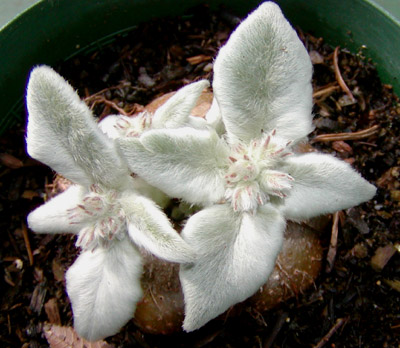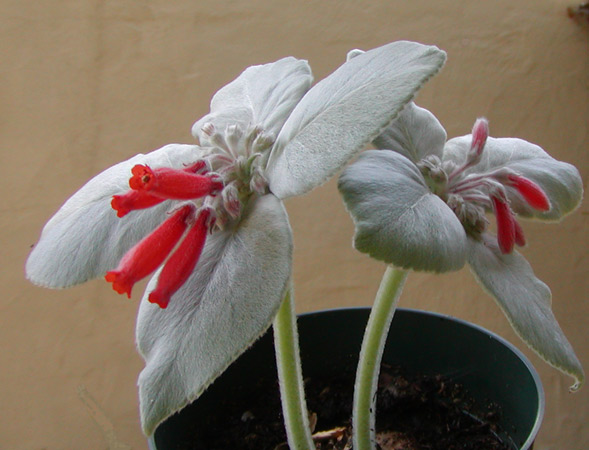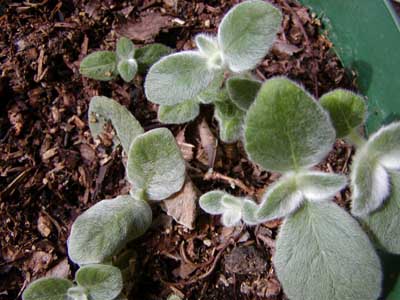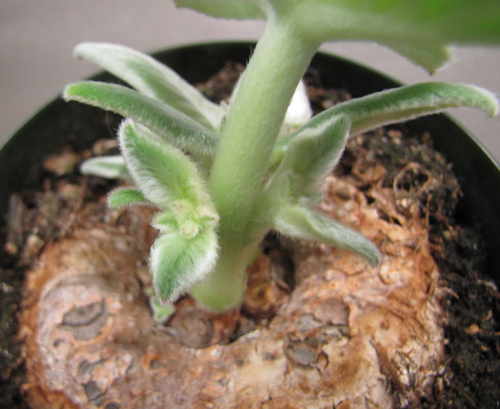|
There are a number of varieties of
S. leucotricha
in cultivation.
The standard plant has one tier of four leaves,
but there are plants with two tiers.
Jon Dixon has a number of plants of this species, and when they
flourish, they sometimes get that second tier.
There is also some variation in the flowers; the standard plant has a ring of small dark spots
at the boundary between the tube and the slightly flaring lobes.
Perhaps some of this variation is due to long-ago hybridization.
This plant, grown by Gene Sussli of San Mateo, California,
shows unusual branching in this species.
Usually, the stems do not branch, but here we can see two flowering
side shoots off the main stem.
Jon Dixon grows a number of variations on
S. leucotricha, so I have devoted a separate page
to his plants.
|



